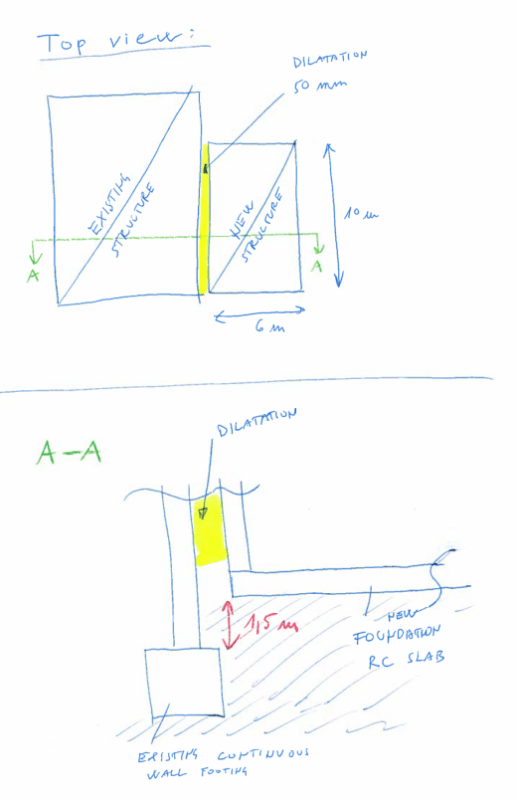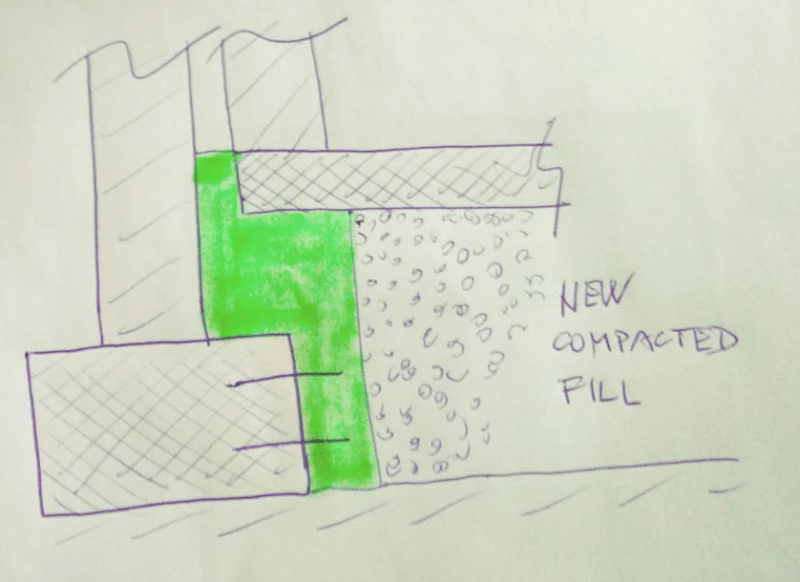greznik91
Structural
- Feb 14, 2017
- 186
I have a small new residental building right next to an existing.
The structures are completely seperated - dilatation 50 mm.
Existing building has a basement, but new building doesnt.
New foundation slab is 1,50 m higher than existing foundation.
Max contact stresses at the edge of a new found. slab are 80 kN/m2.
I have no data about existing building's footings and basement wall.
Im wondering how much effect does new building has on existing basement wall (horizontal pressures) since its right next to it and 1,50 m higher.
Im also wondering about additional settlments of an existing building because of the new one next to it. Can this be a problem?
What do you suggest?

The structures are completely seperated - dilatation 50 mm.
Existing building has a basement, but new building doesnt.
New foundation slab is 1,50 m higher than existing foundation.
Max contact stresses at the edge of a new found. slab are 80 kN/m2.
I have no data about existing building's footings and basement wall.
Im wondering how much effect does new building has on existing basement wall (horizontal pressures) since its right next to it and 1,50 m higher.
Im also wondering about additional settlments of an existing building because of the new one next to it. Can this be a problem?
What do you suggest?






